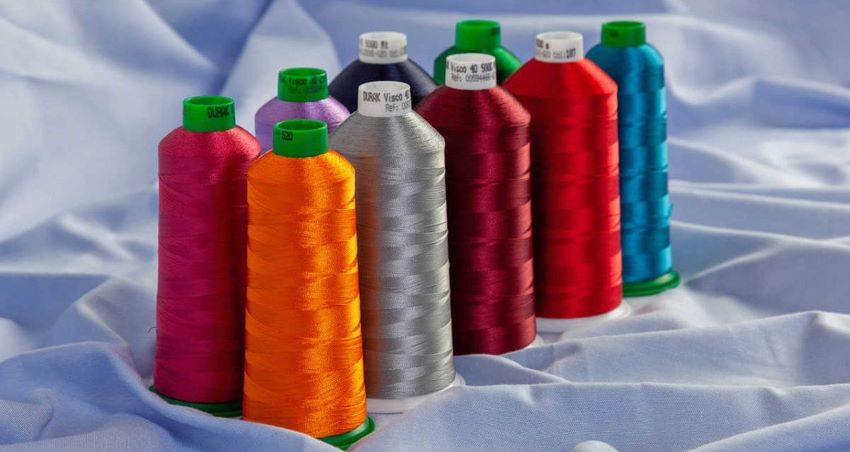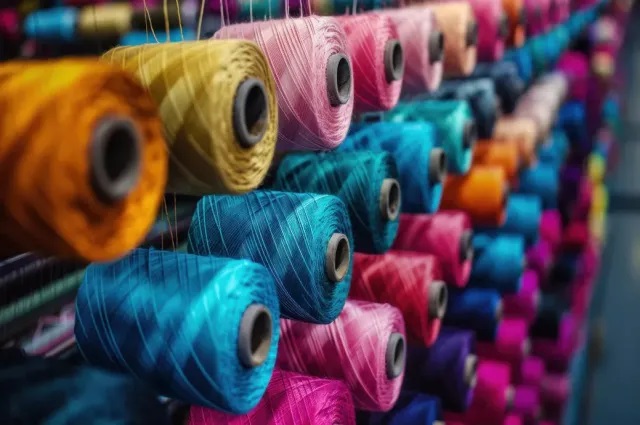
Global fiber production increased to unprecedented levels in 2023, reaching a historic peak of 124 million tons, marking a 7per cent increase from the previous year reveals Textile Exchange's latest Materials Market Report. This growth indicates a doubling of production since 2000, with projections suggesting a further rise to 160 million tons by 2030.
Dominance of synthetics raises sustainability concerns
Virgin fossil-based synthetics, notably polyester, continue to dominate the market with a staggering 60.5per cent share, amounting to 75 million tons in 2023 alone. This dominance underscores concerns over the environmental impact of non-renewable resources and their implications for sustainability goals.
Table: Global fiber production in 2023
|
Fiber type |
Production (mn tons) |
Market share in % |
Notes |
|
Virgin Fossil-Based Synthetics |
75 |
60.5 |
Polyester: 57% |
|
Plant-Based Fibers |
31 |
25 |
Cotton: 20% |
|
Manmade Cellulosic Fibers (MMCF) |
7.9 |
6.4 |
|
|
Animal-Based Fibers |
1.3 |
1 |
Certified mohair & cashmere: 47% market share each |
|
Recycled Fibers |
9.8 |
7.9 |
Recycled polyester: 12.5% market share |
|
Total |
124 |
100 |
The table shows despite growing calls for sustainability, recycled fibers faced setbacks in market penetration. Recycled polyester, for instance, saw its market share dip to 12.5per cent, highlighting the economic challenges posed by cheaper virgin synthetics and current limitations in recycling technologies.
While cotton production experienced a slight decline, sustainable practices maintained a stable 29per cent share of the market. Conversely, certified wool, mohair, and cashmere demonstrated positive growth, reflecting consumer preference for responsibly sourced animal-based fibers.
Emerging trends in Manmade Cellulosic Fibers
Manmade cellulosic fibers (MMCF) showed promising growth, with 6.4per cent of the market share in 2023. This trend signals a potential shift towards more sustainable alternatives within the fiber industry.
There are several reasons for this shift. Lower price of virgin synthetics compared to recycled alternatives and natural fibers remains a significant barrier to sustainable sourcing. Then there are technological limitations as current recycling technologies are not advanced enough to handle the complexities of textile-to-textile recycling at scale, hindering the growth of recycled fiber market.
While consumer awareness of sustainability is growing, it hasn't translated into widespread demand for eco-friendly products that can incentivize large-scale shifts in production practices. And there is a lack of policy support. Policies and regulations that incentivize sustainable fiber production and recycling are crucial but currently lacking in many regions.
Industry experts emphasize the urgent need for transformative action. Claire Bergkamp, CEO, Textile Exchange, underscores the critical gap between sustainability aspirations and current industry practices. The report serves as a clarion call for intensified efforts in textile-to-textile recycling, technological innovation, policy support, and consumer education to drive meaningful change.
The 2023 Materials Market Report paints a complex picture of the global fiber landscape, highlighting both progress and challenges. As the industry navigates towards a more sustainable future, overcoming barriers to recycled fiber adoption and supporting transitions to preferred materials will be pivotal in mitigating environmental impact and meeting climate targets.












